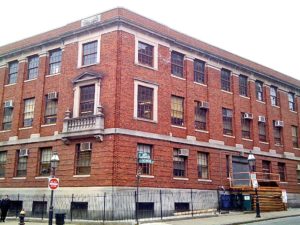 Vacant buildings are common products of a slow economy. Researchers said that recent statistics only show about a 1% decrease in vacant buildings in recent years. If buildings do not have any personal property or occupants in them, they are more likely to face several types of problems. This is a problem that is often faced by a variety of constituents, from Real Estate Brokers and Property Managers to Construction Companies and Corporations. Every year, there are over 30,000 fires in vacant buildings, and many of these result in severe injuries or deaths. They also cost well over $640 million in property damage. Most vacant buildings do not have good security or maintenance.
Vacant buildings are common products of a slow economy. Researchers said that recent statistics only show about a 1% decrease in vacant buildings in recent years. If buildings do not have any personal property or occupants in them, they are more likely to face several types of problems. This is a problem that is often faced by a variety of constituents, from Real Estate Brokers and Property Managers to Construction Companies and Corporations. Every year, there are over 30,000 fires in vacant buildings, and many of these result in severe injuries or deaths. They also cost well over $640 million in property damage. Most vacant buildings do not have good security or maintenance.
This can lead to the following types of problems…
- Copper piping and other valuable fixtures inside the building may attract thieves.
- Buildings become vandalism targets when there is no security on the premises. These buildings often end up with graffiti on their walls and broken windows.
- Many young people are attracted to vacant buildings to use as places for parties or drug use. They are also common places for homeless people or drug dealers.
- Groundwater and soil may become contaminated by toxic substances leaking from a vacant building.
- Fires are common due to smoking trespassers, arsonists, decayed wiring and drug production. To complicate the matter, the automatic sprinkler system may be turned off. This makes it easier for fires to spread.
With a lack of security, early detection is nearly impossible. No building owner wants to be fined for hazardous substances leaking or for a fire that could have been prevented. Building owners can take several steps to protect their vacant properties and make them less likely to be destroyed. The following are some useful tips:
- The exterior of the building should be cleared of cardboard, paper, brush and scrap wood.
- Stop by the property at least once each week. Another option for owners who live out of state is to hire a property management company to care for the building.
- Keep parking areas and sidewalks in good condition, and they should be cleared of ice or snow during the winter.
- If there are any toxic substances that may cause contamination and might harm people or emergency responders, they should be removed.
- Put up obstacles to ensure pedestrians and vehicles stay out of the parking area.
- Pay security guards to monitor the building overnight, and keep exterior lights turned on during the night.
- Make sure the electricity for exit signs and emergency lighting is always on.
- To avoid bursting pipes, make sure the heat stays on or the plumbing system is drained. There should be a minimum temperature set to keep automatic sprinkler systems safe.
- Turn off the utilities except when needed to power alarm systems and lighting.
- Fire detection devices should be linked to a central monitoring service and maintained well.
If a building is almost 70% vacant for longer than 60 days, it may lose some vital insurance coverage. Standard Business Insurance lowers loss payments by 15% for the majority of losses. This does not include water damage, theft, vandalism or breaking glass. The building owner may opt to buy a vacancy permit for an additional premium. This permit replenishes some or all of the coverage for a specified time period. Vacancy changes coverage is also available, and this form of insurance will lower the minimum occupancy the building must have before it can be considered vacant in comparison with the standard percentage. To learn more about this coverage option and how to add it, discuss concerns with one of our knowledgable Business Insurance executives.
